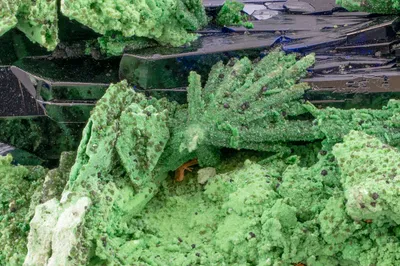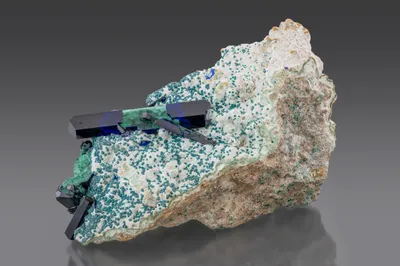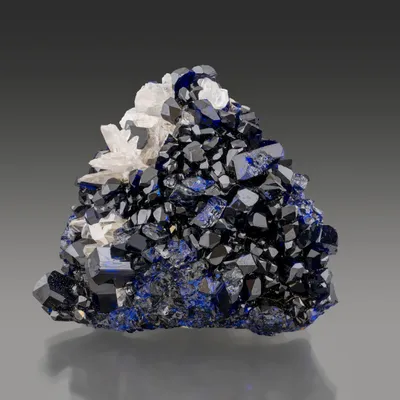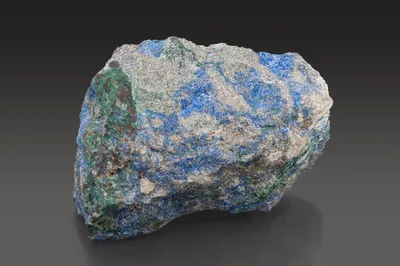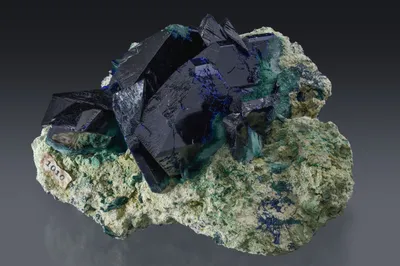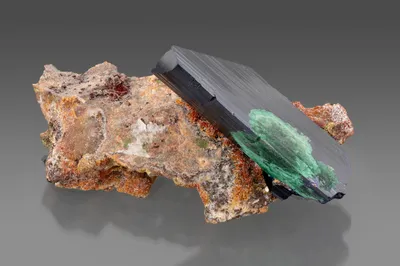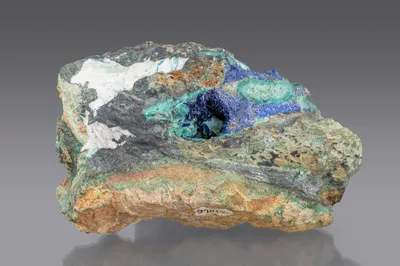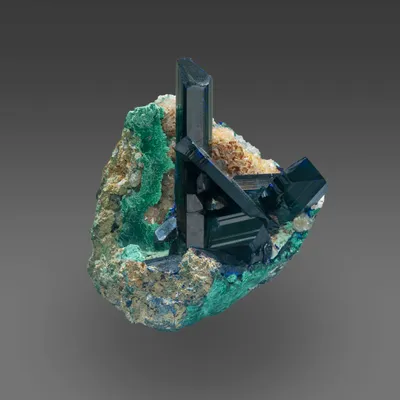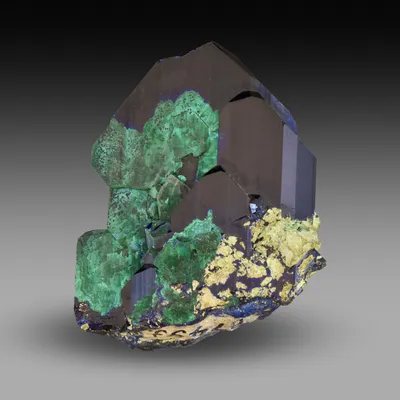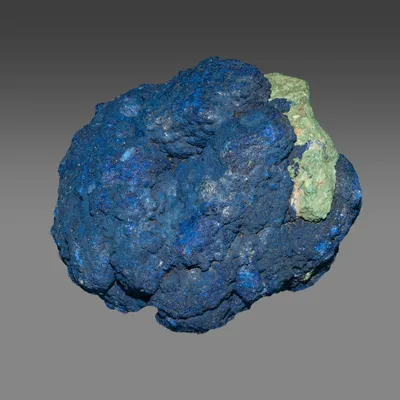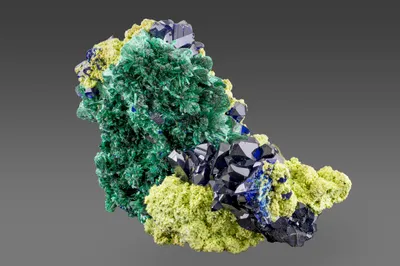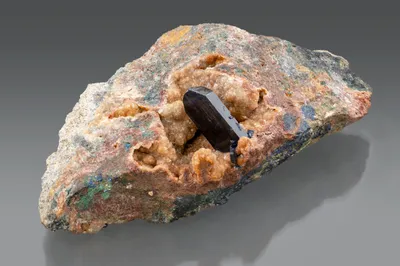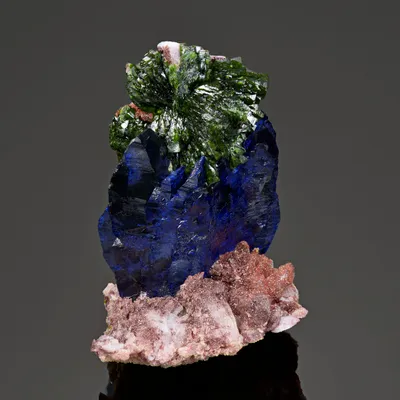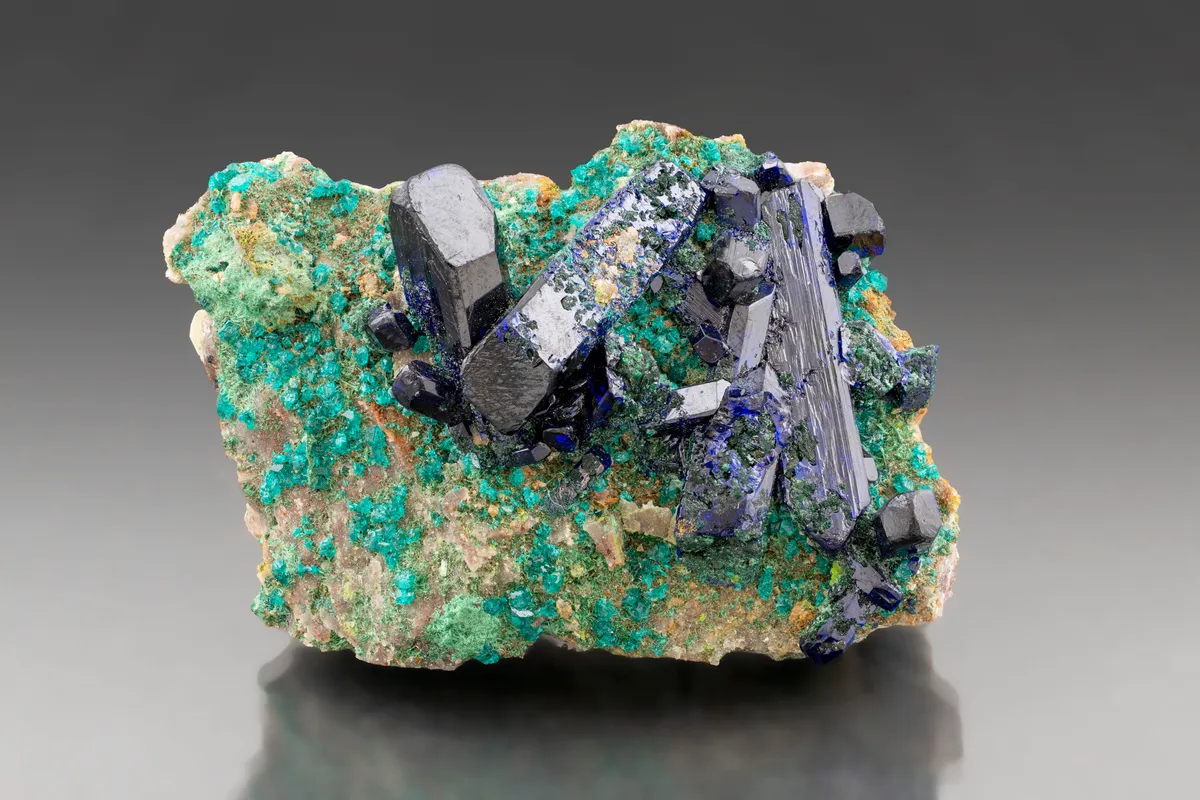
Image Credit: Malcolm Southwood
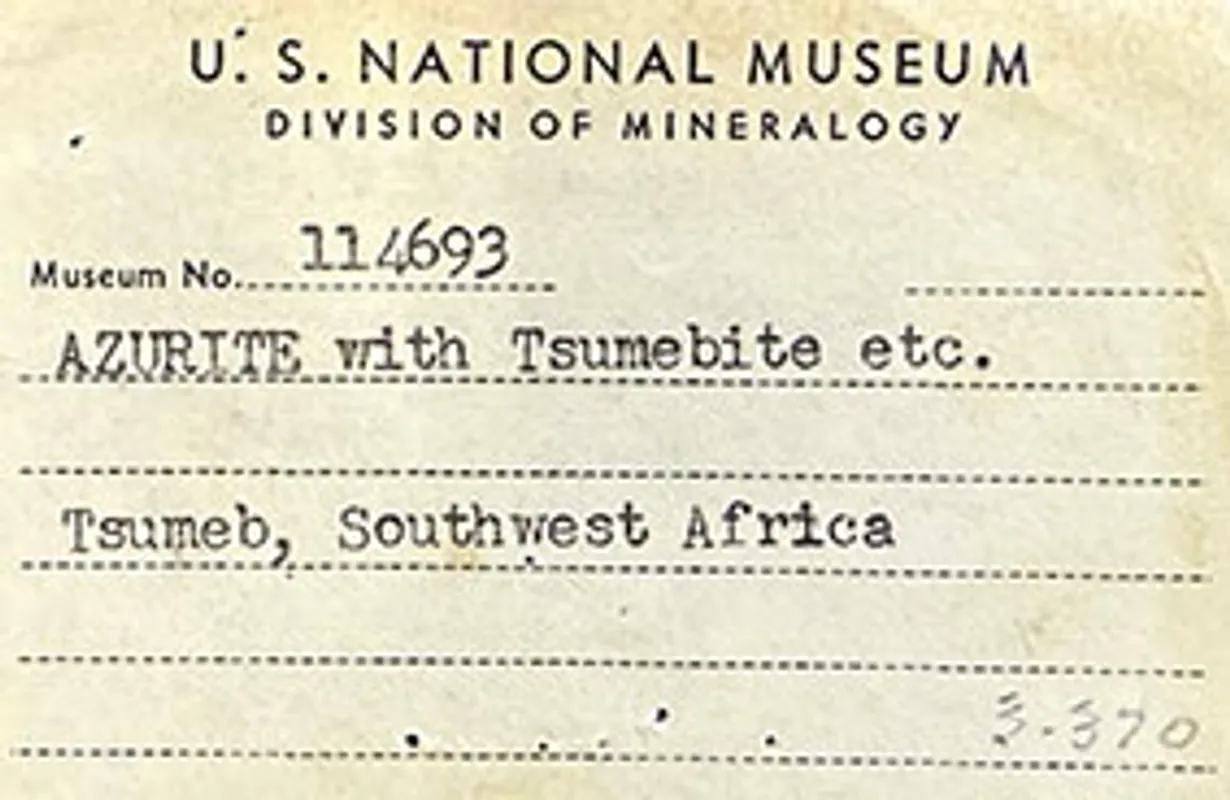
Image Credit: MGMH Archive
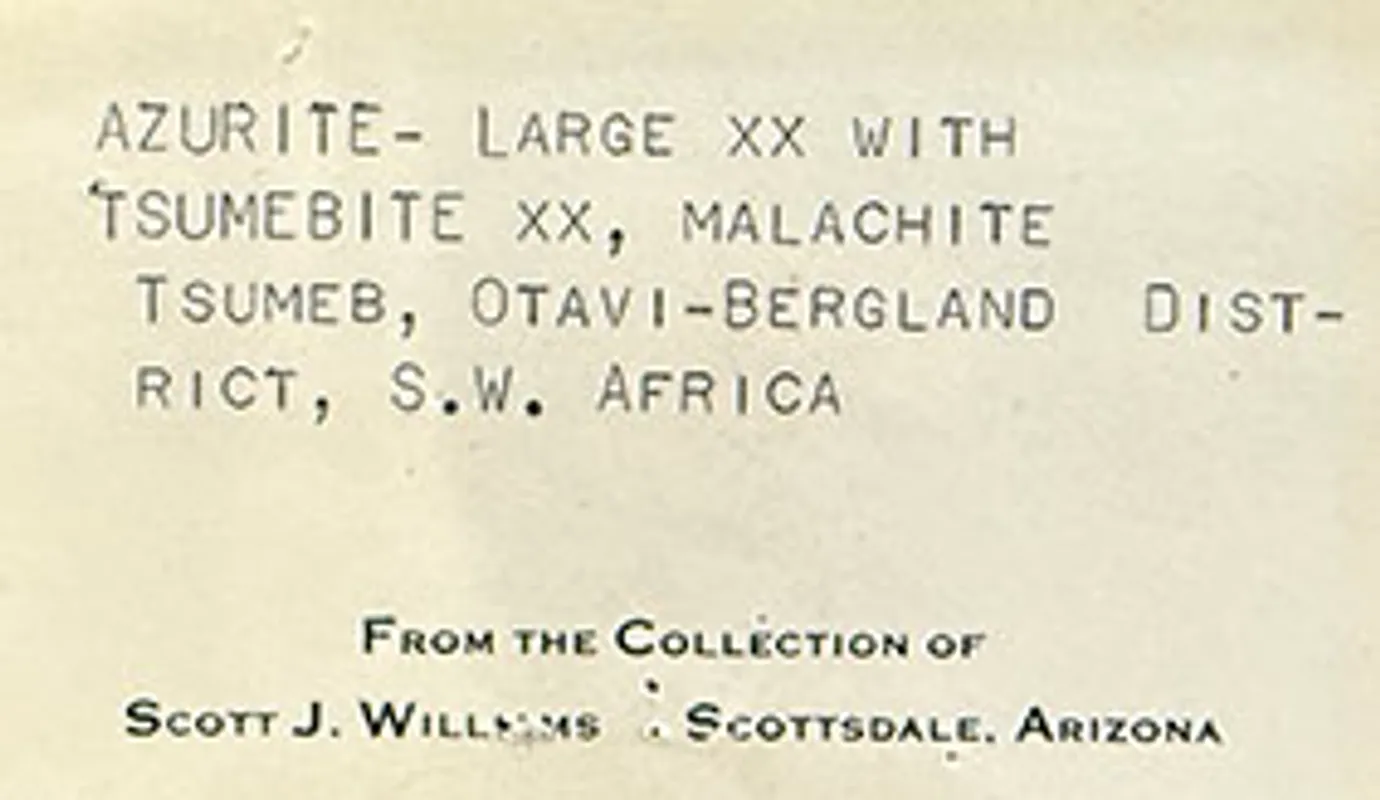
Image Credit: MGMH Archive
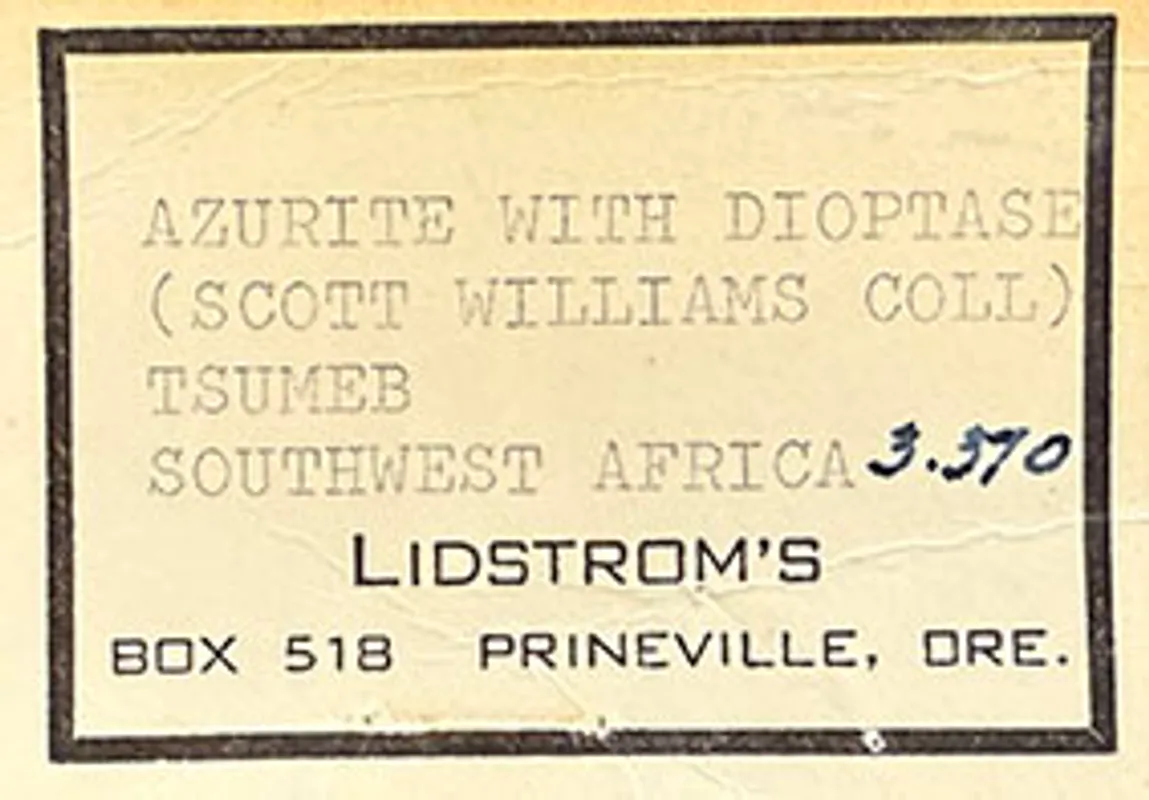
Image Credit: MGMH Archive
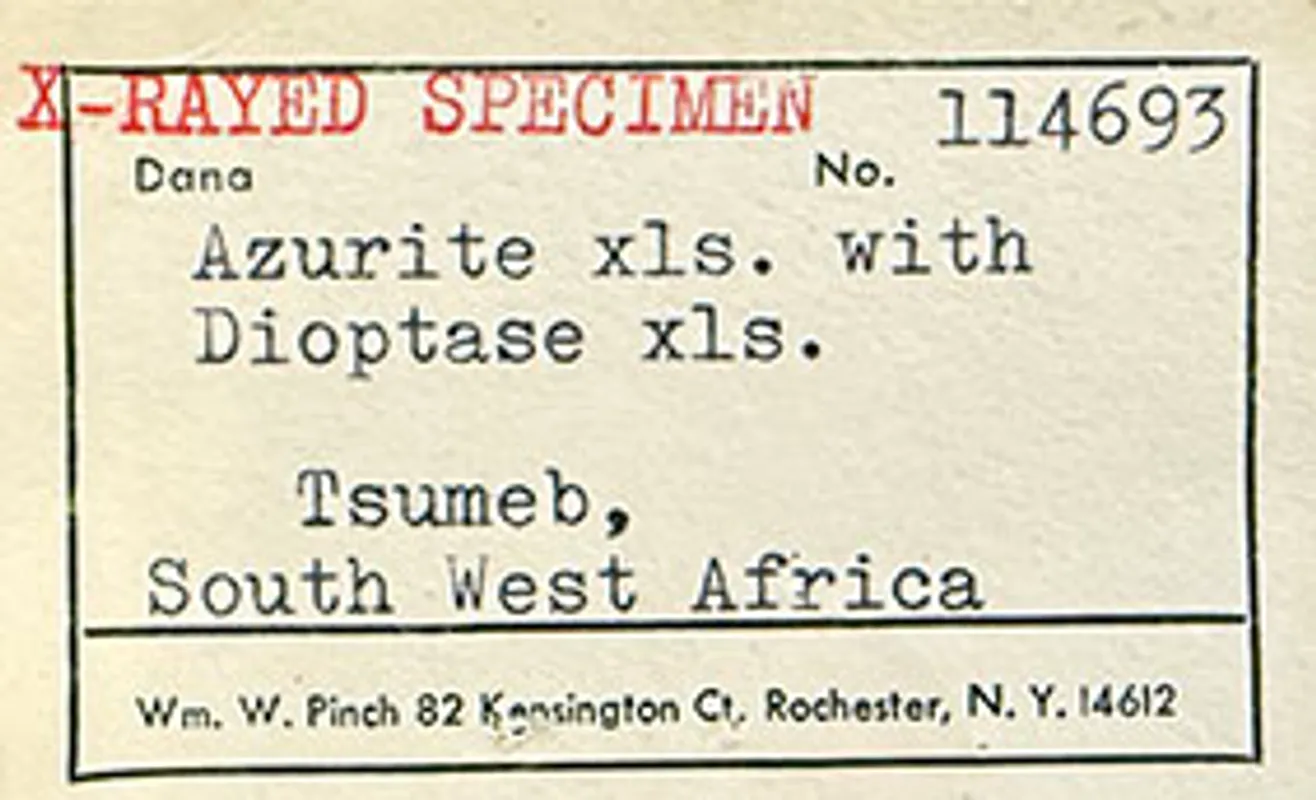
Image Credit: MGMH Archive
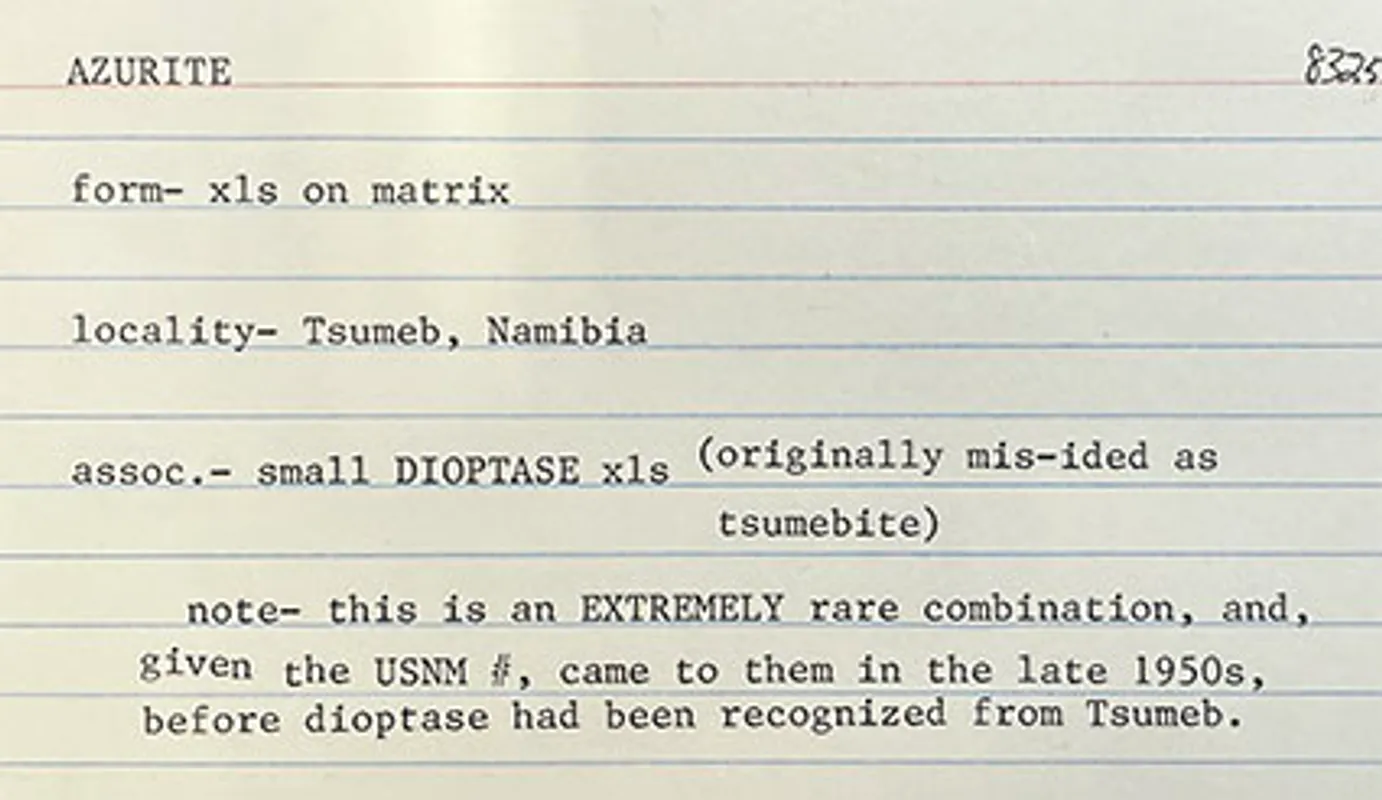
Image Credit: MGMH Archive
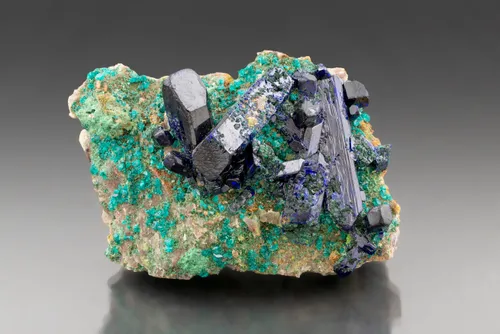
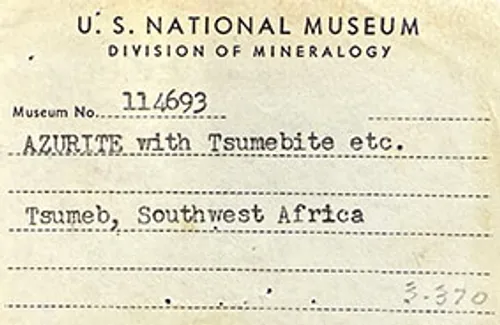
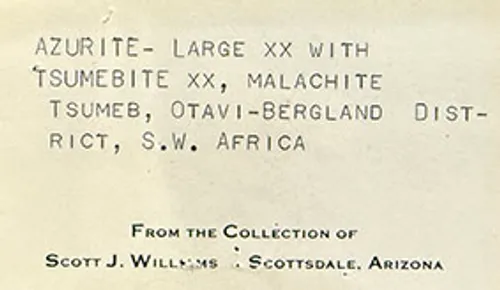

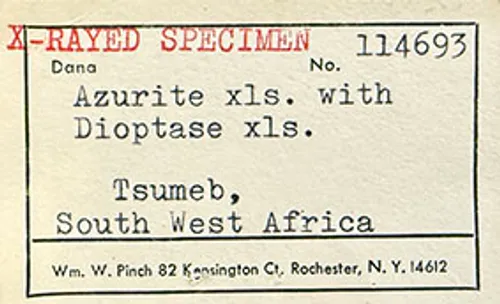
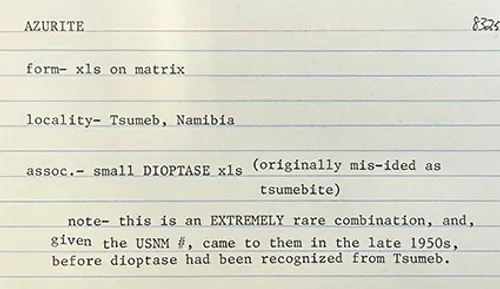
Specimen Title
Azurite (w. dioptase)
Associated Minerals
dioptase; goethite; malachite; quartz
Principal Mineral
Size
Miniature; 50mm
Location in the Mine
Second oxidation zone (?)
Provenance
Smithsonian (USNM); Williams, S.J.; Lidstrom, W.; Pinch, W.W.; Lavinsky, R.; Feinglos, M.N.
Collection
MGMH; 2022.4.8325D
Entry Number
Specimen; TSNB797
Description
Prismatic azurite crystals (to 23 mm) on an Fe-stained quartz rich matrix. The cores of the azurite crystals are extensively replaced by malachite. Resting directly on the matrix, between and around the azurites are numerous dioptase crystals (to 1.5 mm) and mats of acicular malachite (?) needles. The dioptase crystals are highly translucent but quite severely etched.
Mark Feinglos acquired this specimen from Rob Lavinsky in February 2003. It belonged formerly to the U.S. National Museum (Smithsonian; Exhibit 2); Scott J. Williams (Exhibit 3); Walt Lidstrom (Exhibit 4) and Bill Pinch (Exhibit 5).
As Feinglos remarked on his data card (Exhibit 6), this is an important specimen because the association of azurite with dioptase at Tsumeb is extremely rare. The Smithsonian catalogue number – 114693 – indicates an accession date some years before the first significant discoveries of dioptase at Tsumeb. It is notable, therefore, that the dioptase was misidentified as "tsumebite" by the specimen’s early owners. While there is no record of location in the mine, the presence of dioptase and the Smithsonian’s accession date provide circumstantial evidence that it came from the upper part of the second oxidation zone (?).
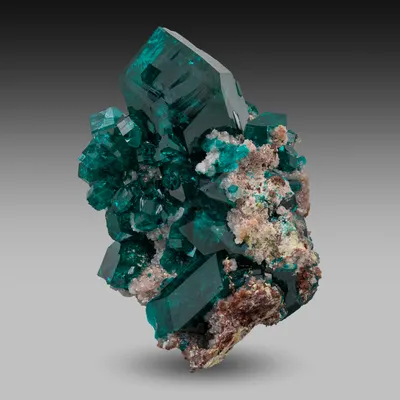
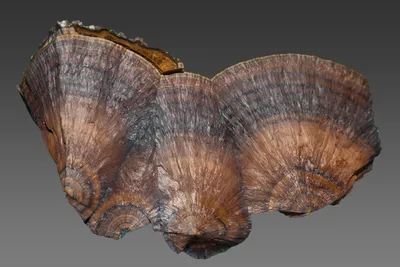
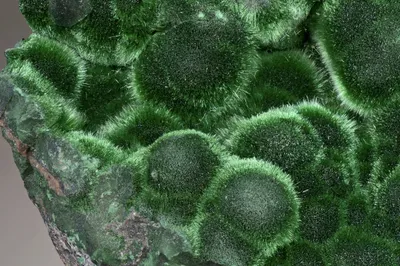

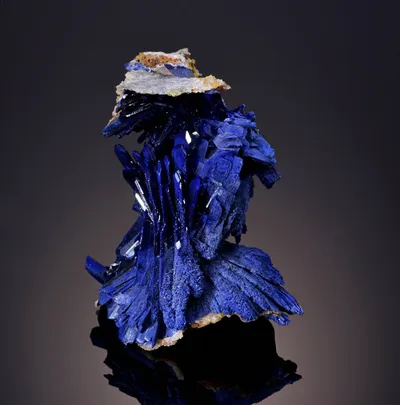
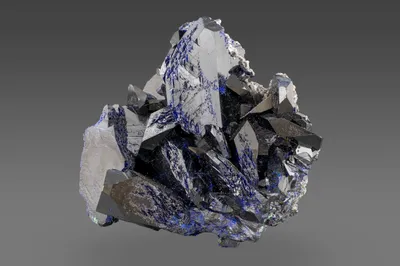
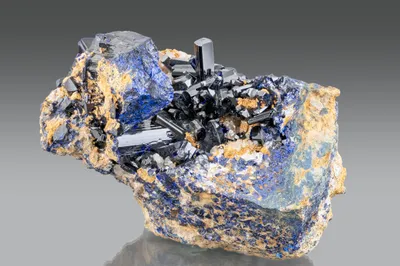
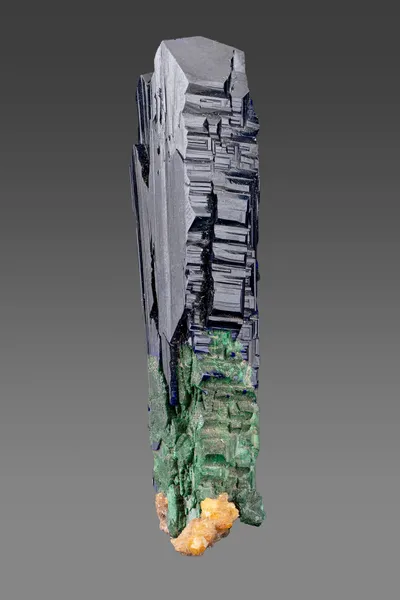
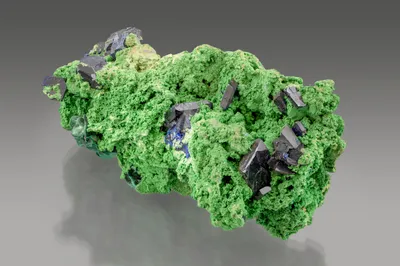
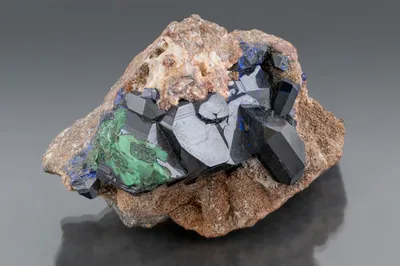
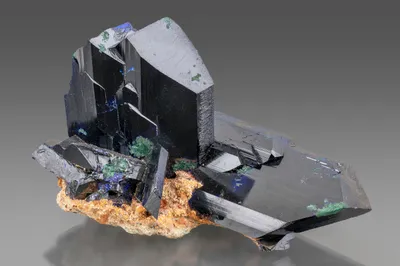
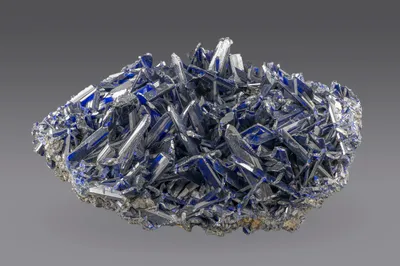

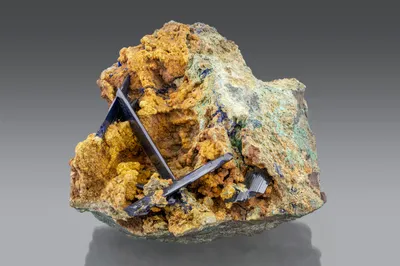

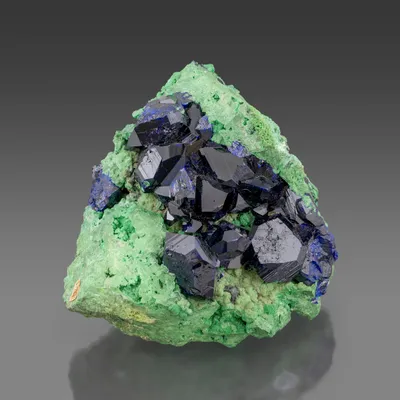
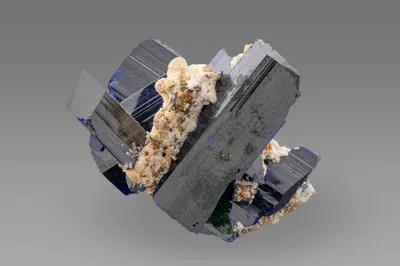
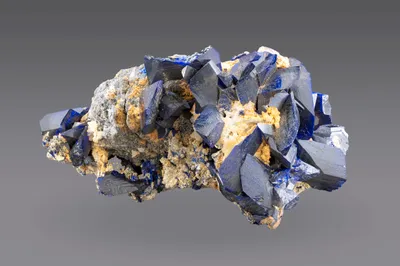
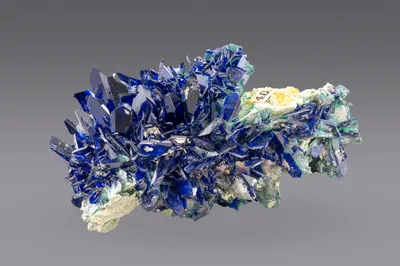
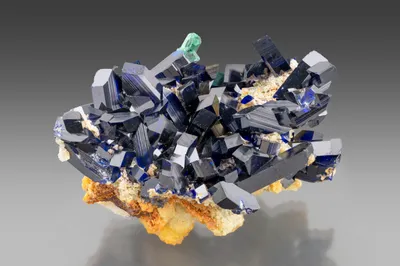
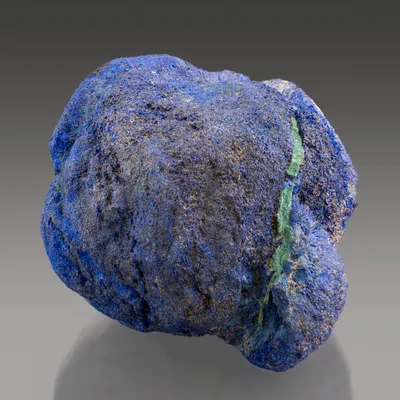
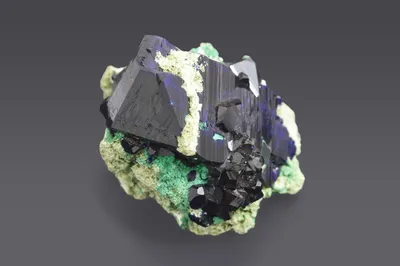
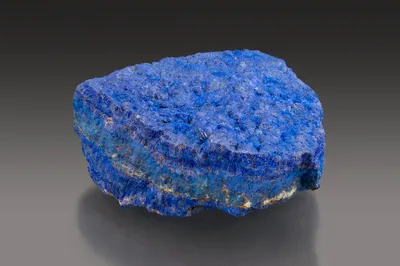
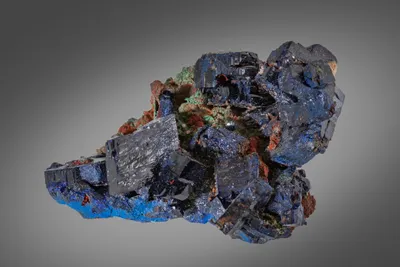
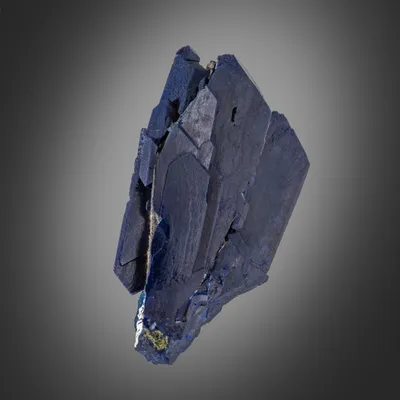
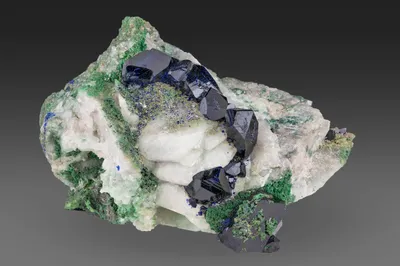
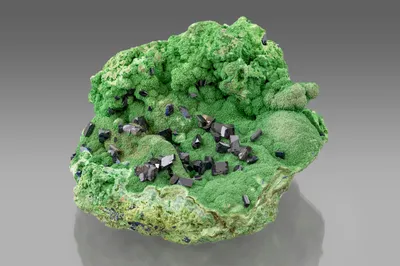
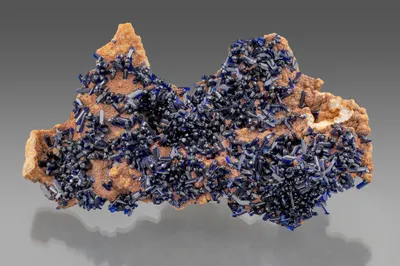
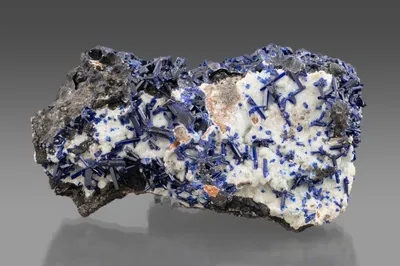
on_Smirthsonite_88mm_Southwood.CN3WXUeN_Z1ChNF9.webp)

